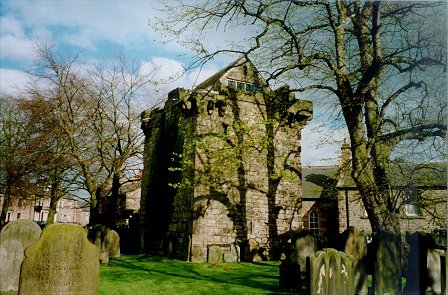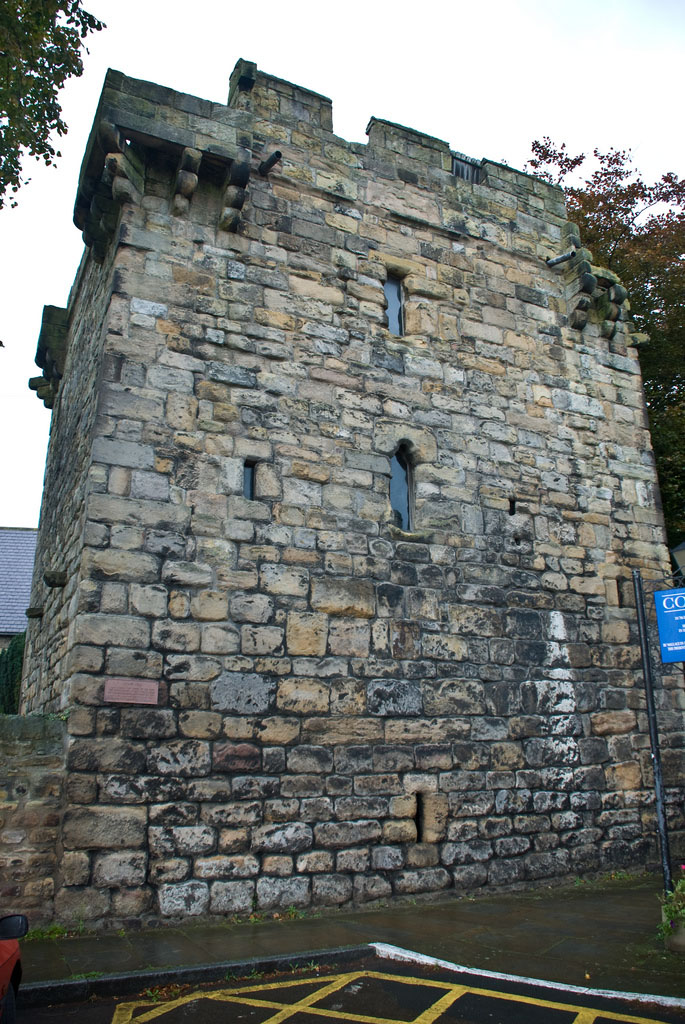Vicars Peel – Corbridge
Sep 28th, 2009 | By admin | Category: Photo History Thus is was said of the Border Reivers. The Reivers view of religion was the result of a number of factors. To begin with the church had little presence on the border. Due to the state of the border there were few members of the clergy who would wish to take up residence and the challenge of converting cattle rustlers, theifs and murderers. Nor was this simple paranoia, as the clergy that were present on the borders were often at as much risk as any other resident.
Thus is was said of the Border Reivers. The Reivers view of religion was the result of a number of factors. To begin with the church had little presence on the border. Due to the state of the border there were few members of the clergy who would wish to take up residence and the challenge of converting cattle rustlers, theifs and murderers. Nor was this simple paranoia, as the clergy that were present on the borders were often at as much risk as any other resident.
It was not unknown for the Reivers to target the clergy and their churches during raids. For example during an undertaking by some 500 men from Liddesdale, amongst a number of places hit, Ingram church had its roof torn down with the lead presumably carried away. These attacks on religious places were soley the domain of the Reivers as many generals during war would often target churches and Abby’s, presumably as they are visible representations of that particular society. Not only were the churches the targets of the Reivers, but the clergy themselves were not immune from their attentions. Kidnapping the clergy also seemed to be an amusing (for the instigators) past-time. Seemingly no-one was ‘out of bounds’ as far as reiving went.
‘If Jesus Christ were amongest them, they would deceave him,’
Richard Fenwick 1597
The church, however, did not put forth a chaste and goodly front. Many of its clergy within the Borders had what were at best suspect personal images. Its clergy, whom there were never enough, often did little more than pay lipservice to the teachings of church, in conjunction with
much superstition. The clergy themselves were often accused of scandalous behavior. Will Patrick priest of Bewcastle and his curate John Nelson, were named amongst 500 other Englishmen within a complaint by the Scots in 1552. Priests were often found to be armed themselves, and it should come as no surprise that some of the clergy may have found that the sword was in fact mightier than the pen. In some cases they may not have had any other choice as the clergy were included in the watches, a Border Law which stated it was everyones duty to watch the fords and passes.
The churches response in matters of complaint were limited. Many Reivers were excommunicated, removing them from the church, that is a church they cared nothing for. A response with limited effect. Even when excommunicated the Reivers knew that they could be reinstated. Early in the 16th century The Archbishop of Glasgow’s ‘Monition of Cursing’ against the Border Reivers went one step further. In comparison to an excommunication a Monition cannot be revoked. This Curse went on for some 1500 words and curses the Border Reivers for everything imaginable. Presumable this was of much amusement to the Reivers.
Probable the most visible evidence of the rocky history of border religion can be seen in the presence of a number of Vicar’s Peels. As can be seen from the photo above a particularly fine example can be found at Corbridge. Built in the early 14th century and standing within the grounds of St. Andrews Church. The Tower, as with many buildings along the Border was built from Roman worked stone pillaged from nearby ruins. With its original door and a stone table and washbasin the solid structure of the Peel bears witness to the turbuland times. Due to the ever present danger of ones home being burnt to the ground, some additions to the household would be built in stone. This can be seen within the Vicars Peel, where sloping stones act as a book rest. The less there was to burn, the least amount of damage could be done.
The churches response in matters of complaint were limited. Many Reivers were excommunicated, removing them from the church, that is a church they cared nothing for. A response with limited effect. Even when excommunicated the Reivers knew that they could be reinstated. Early in the 16th century The Archbishop of Glasgow’s ‘Monition of Cursing’ against the Border Reivers went one step further. In comparison to an excommunication a Monition cannot be revoked. This Curse went on for some 1500 words and curses the Border Reivers for everything imaginable. Presumable this was of much amusement to the Reivers.
Probable the most visible evidence of the rocky history of border religion can be seen in the presence of a number of Vicar’s Peels. As can be seen from the photo above a particularly fine example can be found at Corbridge. Built in the early 14th century and standing within the grounds of St. Andrews Church. The Tower, as with many buildings along the Border was built from Roman worked stone pillaged from nearby ruins. With its original door and a stone table and washbasin the solid structure of the Peel bears witness to the turbuland times. Due to the ever present danger of ones home being burnt to the ground, some additions to the household would be built in stone. This can be seen within the Vicars Peel, where sloping stones act as a book rest. The less there was to burn, the least amount of damage could be done.
View Larger Map
Ps I can highly recommend the sandwich bar just to the right of the street view image.


